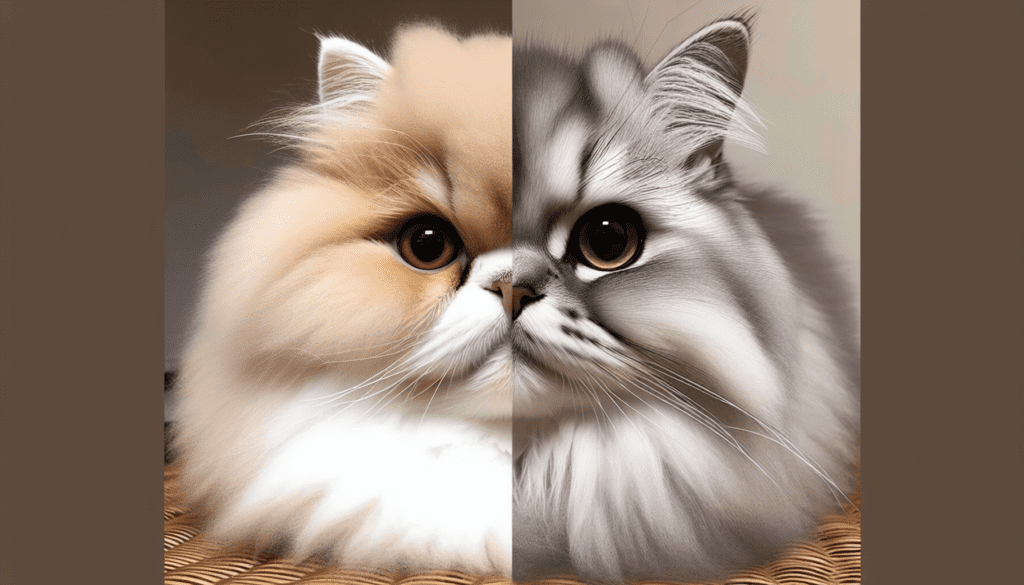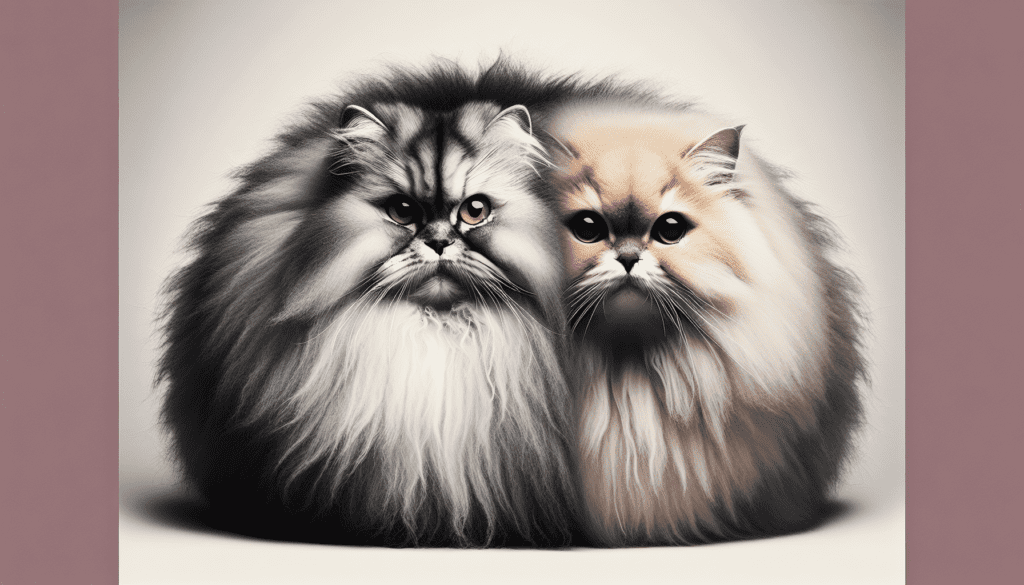Hello there! Have you ever wondered if Persian cats are smaller than other cats? Well, let’s explore this question together. While Persian cats are known for their luxurious fur and adorable flat faces, you may be surprised to learn that they actually have slightly shorter legs compared to some other cat breeds. This unique trait adds to their charm and gives them a distinctive appearance that is loved by many cat enthusiasts. So, next time you see a Persian cat, take a closer look at their adorable little legs! Are Persian Cats Smaller than Other Cats?
Do you find yourself wondering whether your Persian cat is smaller than other cat breeds? One common question pet owners have is whether Persian cats have shorter legs compared to other cats. Let’s delve into this topic and explore the features of Persian cats that may make them seem smaller in size.


The Physical Characteristics of Persian Cats
Let’s start by looking at the general physical characteristics of Persian cats. Persian cats are known for their long, luxurious fur, sweet expressions, and round faces. They have a large, round head with big, expressive eyes and a short, snub nose.
Persian cats have a stocky, muscular build with a broad chest and a short, sturdy neck. These cats have small, rounded ears and short legs with large, round paws. While Persian cats may appear smaller due to their fluffy fur and rounded features, their actual size may vary depending on their genetics and overall health.
The Size of Persian Cats Compared to Other Breeds
When it comes to comparing the size of Persian cats to other cat breeds, it’s essential to consider the individual variation in size within each breed. While some Persian cats may be smaller in stature, others may be larger and more robust.
Overall, Persian cats tend to be medium to large in size, with males typically being larger than females. However, because of their fluffy coats and compact bodies, Persian cats may appear smaller than other breeds with a sleeker build.
Comparing Leg Length
One factor that may contribute to the perception that Persian cats are smaller is their shorter leg length compared to some other cat breeds. Persian cats have relatively short legs, which give them a low-to-the-ground appearance.
Their stocky, muscular bodies are supported by these short legs, creating a compact and balanced physique. While some cat breeds, such as the Siamese or the Maine Coon, have longer legs and a more slender build, Persian cats are known for their plush, compact bodies and shorter appendages.
The Role of Genetics in Size
Genetics play a significant role in determining the size of a cat, including Persian cats. Breeders selectively breed cats to achieve specific physical traits, including size, coat color, and temperament.
If you have a Persian cat that seems smaller than average, it may be due to its genetic makeup or lineage. Some Persian cats may have been bred for smaller size or specific characteristics, leading to variations in overall size and appearance within the breed.
Health Considerations for Persian Cats
When it comes to determining the size and overall health of your Persian cat, it’s essential to consider factors beyond genetics. Proper nutrition, exercise, and regular vet check-ups are crucial for maintaining your cat’s optimal health and well-being.
Maintaining a Healthy Weight
One common issue that can affect the size and overall health of Persian cats is obesity. Because Persian cats are known for their laid-back and relaxed demeanor, they may be prone to weight gain if not provided with a balanced diet and regular exercise.
Obesity can lead to various health problems, including diabetes, heart disease, and joint issues. To help your Persian cat maintain a healthy weight, feed them a balanced diet of high-quality cat food, monitor their portion sizes, and engage them in regular play and exercise.
Regular Veterinary Check-Ups
Regular veterinary check-ups are essential for monitoring your Persian cat’s overall health and addressing any potential issues early on. Your vet can help assess your cat’s weight, body condition, and overall well-being, providing guidance on nutrition, exercise, and preventive care.
If you have concerns about your Persian cat’s size or growth, your vet can perform a physical exam and recommend any necessary tests or treatments. Keeping up with routine vet visits can help ensure that your Persian cat remains healthy and happy throughout their life.
Tips for Caring for Your Persian Cat
Whether your Persian cat is smaller than average or simply appears petite due to their fluffy fur and round features, it’s essential to provide them with the care and attention they need to thrive.
Grooming Your Persian Cat
One key aspect of caring for a Persian cat is grooming their long, luxurious coat. Persian cats have thick, silky fur that requires regular brushing to prevent tangles, mats, and shedding.
Set aside time each day to brush your Persian cat’s coat, paying particular attention to areas prone to matting, such as behind the ears and under the armpits. Regular grooming not only keeps your cat’s coat looking beautiful but also helps prevent skin issues and discomfort.
Providing a Balanced Diet
Feeding your Persian cat a balanced diet is essential for maintaining their overall health and well-being. Choose a high-quality cat food that meets their nutritional needs, including protein, vitamins, and minerals.
Consider your cat’s age, activity level, and any health concerns when selecting the right food for them. Avoid overfeeding your cat or providing them with excessive treats, as this can lead to weight gain and health problems over time.
Engaging in Regular Play and Exercise
While Persian cats may not be as active or energetic as some other breeds, regular play and exercise are still important for their physical and mental health. Provide your cat with interactive toys, scratching posts, and climbing structures to keep them entertained and engaged.
Engage in playtime with your Persian cat to help them stay active and stimulated. Whether it’s chasing a toy mouse, batting at a feather wand, or exploring a puzzle feeder, interactive playtime can help keep your cat happy and healthy.
Creating a Safe and Comfortable Environment
Creating a safe and comfortable environment for your Persian cat is essential for their overall well-being. Provide them with a cozy bed, scratching posts, and hiding spots where they can retreat and relax.
Keep your home clean and free of hazards that could harm your cat, such as toxic plants, small objects that could be swallowed, or open windows without secure screens. Creating a stress-free environment can help your Persian cat feel comfortable and secure in their surroundings.


In Conclusion
While Persian cats may indeed have shorter legs and a more compact build compared to some other cat breeds, their actual size and appearance can vary based on genetics, breeding, and individual characteristics. If you have concerns about your Persian cat’s size or growth, consult with your vet for guidance and support.
By providing your Persian cat with the proper care, nutrition, and attention, you can help them lead a healthy and happy life. Whether your Persian cat is petite or robust, their unique personality, charming features, and loving nature make them a cherished companion for cat lovers everywhere.

